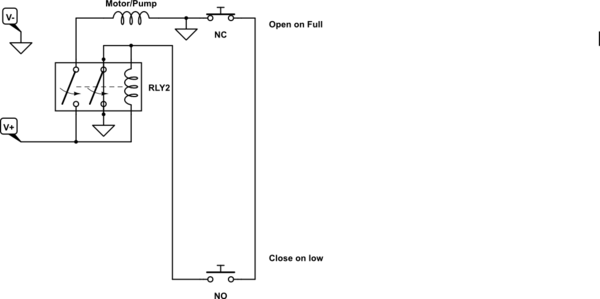I'm trying to build a hysteresis water pump system with 2 water level switches. Please see the diagram and explanation of this setup I've taken off the web:
The first switch (L) is set at the minimum liquid level desired in the tank. The second switch (H) goes at the maximum desired level. When the liquid is below both switches, they are both closed; the pump runs, filling the tank. As the liquid fills past the first switch, it opens. However, seal-in relay A has been activated and closed, bypassing the now-open switch L (effectively “sealing it in”), so the pump continues to run until the high-level switch H opens. When the high-level switch opens, the motor relay P opens, stopping the motor, and seal-in relay A opens.
My question is, what is a seal-in relay in the consumer market?
I can buy water level switches on ebay for like 5 bucks, but I am finding it hard to find what a seal-in Relay switch is that is needed for this schematic. And i'm looking at something very basic and cheap to be just enough to do the task. My problem is I can't buy this item because searching for seal-in relay gets me no where.
Thanks!



